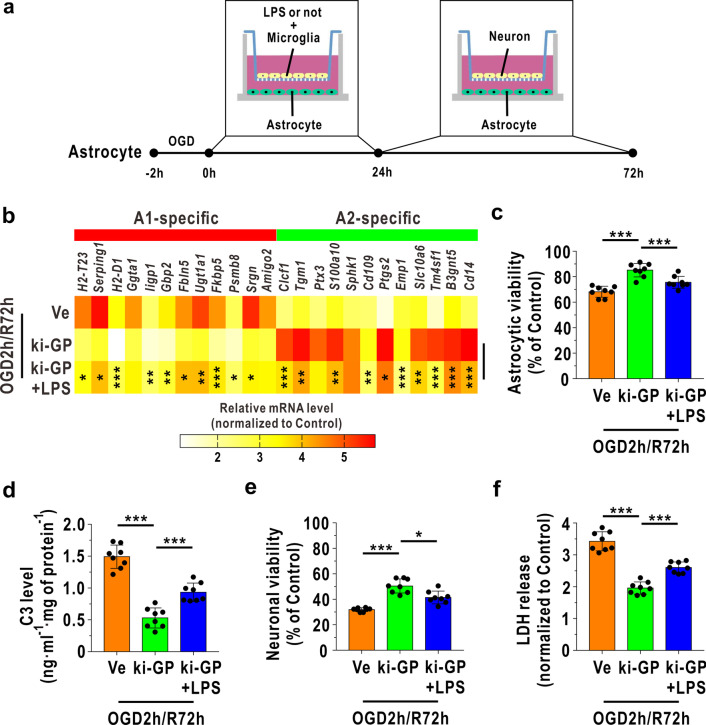Fig. 3.
Glycogen mobilization enhances astrocyte and cocultured neuron survival by regulating astrocytic A1/A2 paradigm after OGD/R. a Diagram of the astrocyte–microglia coculture model and astrocyte–neuron coculture model. Astrocytes received OGD challenge for 2 h and cocultured with microglia immediately following reoxygenation for 24 h, and then cocultured with neurons at 24 h following reoxygenation for 48 h. The neurons also received the OGD challenge for 2 h and cocultured with astrocytes at 24 h following reoxygenation. LPS was added to astrocyte–microglia cocultures at a concentration of 1:500. b Heat map of relative mRNA levels of 12 target genes of A1-like astrocyte and A2-like astrocyte at 72 h following reoxygenation, determined by RNA sequencing (n = 4). Statistical analysis was calculated between ki-GP group and ki-GP + LPS group using one-way ANOVA followed by LSD post hoc analysis or Dunnett T3 post hoc analysis. c Astrocytic viability at 72 h following OGD/R analyzed by CCK-8 (n = 8). d C3 levels in the astrocyte–neuron coculture medium at 72 h following OGD/R (n = 8). e Cocultured neuronal viability at 72 h following OGD/R, as analyzed by the CCK-8 assay (n = 8). f LDH release in astrocyte–neuron coculture medium at 72 h following OGD/R (n = 8). *P < 0.05, **P < 0.01, ***P < 0.001. One-way ANOVA followed by LSD post hoc analysis for c, d. One-way ANOVA followed by Dunnett T3 post hoc analysis for e, f

